
Today I found myself curious and I would like to submit 3 simple questions as a market survey and, if you are kind enough to answer me, in return as thanks I will send you completely free (shipping included) my book “FLEXIBLE PRODUCTION”, the second edition , modified and more extensive than the first edition.
IMPORTANT: answer the 3 questions quickly, as in without thinking too much. They must be instinctive answers, there are no right or wrong answers, there is only your answer.
1) the first manufacturer that comes to mind for: MACHINING CENTERS
2) the first manufacturer that comes to mind for: TRANSFER MACHINES
3) the first manufacturer that comes to mind for: FLEXIBLE MACHINES
You simply have to write the 3 names in order
1)
2)
3)
Write your address below, SEND and you will receive the book “FLEXIBLE PRODUCTION” completely free.
WHAT IS THE BOOK ABOUT?
HERE IT IS…
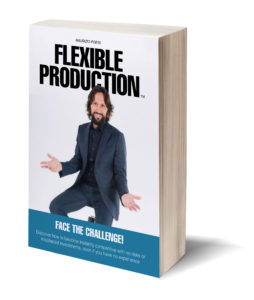
I wrote this book on Flexible Production to share useful concepts and ideas with people who are in some way associated with the world of machining pieces to specifications through the removal of chips. The aim is to provide support and stimulus to help these people deal with new challenges.
SINCE 2008, EVERYTHING HAS CHANGED IN THE WORLD OF PRODUCTION, AND ELSEWHERE.
Many companies have been forced to come up with new ways to stay competitive, and there are many cases where company owners simply gave up in the face of horrendous market situations.
Typically, Asian countries, China in particular, attack the sector with aggressive, almost cut-throat prices. This is possible thanks to a combination of cheap labour and government aid, operating a scorched earth policy to combat Italy’s long-established companies that had been working for years in the sectors of the production of custom-made components.
To hold on to the market shares they had earned through years of hard work, this entirely new market dynamic forced these long-standing companies to take a short-cut and react with the fastest, but also most dangerous response: cutting prices and thus sacrificing profit margin or even selling below cost. This strategy inevitably hit the finances of the companies hard, translating into a social problem, with many companies being forced to lay people off or, in the worst cases, go out of business.
We have been a manufacturer of high-productivity systems from 1958, when my father first embarked on this adventure. Over the course of those 50+ years I was able to ascertain that there has been an increasingly frantic race to produce systems that are more and more powerful, increasingly fast, and where the key performance figure was the hourly production of components. Each new machine tool model was praised as it increased the hourly production more and more.
HOW IS IT POSSIBLE TO BE COMPETITIVE AGAIN IN THIS DAY AND AGE AFTER THE ASIAN TIGERS HAVE MERCILESSLY LAUNCHED THEIR ATTACK?
I certainly don’t intend to convince you that optimism can overcome all difficulties; it is not enough to take a course on motivation to get galvanised and then hope for the best.
If you are operating in this sector, you will surely understand that in the case of a brass fitting for garden applications, for example, where quality and application are truly basic, it will be quite difficult to successfully produce this item in Europe and beat the Chinese competition.
At the same time, a vast majority of other products can be made by adopting an approach that is different from the usual approach in place for years. The new challenge is to produce only what you sell, and not to produce for the warehouse.
This makes it possible to reduce the value of the stock on hand and of all costs associated with it. Only producing what you sell is, in and of itself, an idea that sounds good to many people, but it must be undertaken with the right tools.
Quickly meeting the customers’ needs with medium-sized lots, in other words from 500 to 5000 pieces, is a race that the Chinese simply cannot win!
That being said, this book aims to help you examine all the issues associated with production or, better yet, Flexible Production. In fact, this is the concept from which my work takes its name.
As of today, you can concentrate on understanding different ways of being competitive in the world of manufacturing, without pulling your hair out due to the sale price that Asian countries are ruthlessly imposing on you.
Now, all you have to do is browse through the chapters of this book and sign up for my blog, with the exclusive mailing list, so that you can receive other articles that deal with these issues in depth.
Here are the chapters of the book:
Capitolo 1: The first book on flexible production
Capitolo 2: Who is Maurizio Porta?
Capitolo 3: The traditional Transfer machine is dead
Capitolo 4: “My competitors have to die”
Capitolo 5: How to cut down on production costs for valves from ½” to 12″
Capitolo 6: Five steps before you purchase a machine tool
Capitolo 7: The secret to reducing machine downtime
Capitolo 8: Producing lots from 500 to 5000 pieces: the winning strategy
Capitolo 9: Running a marathon in high heels
Capitolo 10: How to eliminate tool vibration
Capitolo 11: Multicenter takes it all and overtakes Transfer
Capitolo 12: The harsh truth about the crisis
Capitolo 13: What I learned in the United States
Capitolo 14: How to switch productions in just 5 minutes
Capitolo 15: How to satisfy insanely demanding customers
Capitolo 16: How to carry out a final test on a machine tool
Capitolo 17: Shortage of technical personnel: what to do
Capitolo 18: The cycle time error
Capitolo 19: Machine tool geometric check ISO-230
Capitolo 20: Lead-free brass: how to process CW511L
Capitolo 21: Long chips: how to solve the problem
Capitolo 22: Record! 4 Multicenters sold in just 72 hours
Capitolo 23: Turret / Revolver head or tool change?
Capitolo 24: Create a winning business!
Capitolo 25: Cost per piece: the crucial figure
Capitolo 26: CPK – How to control the capacity of a process
Capitolo 27: The Multicenter and the secret of the weighing scale (NEW)
Capitolo 28: How many times have you said to yourself: “darn those small lots” (NEW)
Capitolo 29: Others have failed… But not the Multicenter! (NEW)
Capitolo 30: Why the Multicenter does not work! (NEW)
Capitolo 31: The abused Multicenter (NEW)
Capitolo 32: And now, let’s hear from the customers!
Enjoy!
HERE SOME COMPANIES WHICH IMPLEMENTED MY METHOD “FLEXIBLE PRODUCTION”:
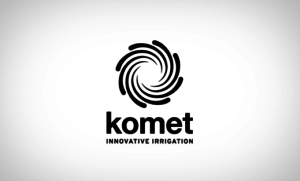
KOMET
HERE WHAT THE MULTICENTER SOLVED!
Below are the three questions that I asked one of my customers who uses the MULTICENTER.
Incidentally, let’s give real names and surnames, because there are too many endorsements that praise certain products that are entirely made up. The funny thing is that it is never possible to verify them, and this aspect, which is the result of science-fiction marketing, upsets me a great deal!
Why? Well… Because there is no signature at the bottom of these endorsements; no one knows who this super satisfied customer is and, because of privacy laws, you are not allowed to know… This is a typical gimmick!
SO, WHAT DID I DO?
I simply asked my 3 questions and then asked for permission to publish the answers as an endorsement (in compliance with privacy laws) with all the necessary references so that anyone, even you, can contact the person/company in question and verify the truth of what is being reported!
Here are my three questions and the respective answers, verbatim:
1) WHAT KIND OF PROBLEMS WERE YOU EXPERIENCING BEFORE BUYING THE MULTICENTER?
We had a horizontal center and were unable to deal with the work load due to many pieces and relatively small lots, so in order to solve this problem we would have had to purchase two additional machining centers, which also meant having to hire more personnel to operate the machines. Then we discovered the MULTICENTER!
2) HOW DID YOU SOLVE THIS PROBLEM THANKS TO THE MULTICENTER?
Thanks to the MULTICENTER, we were able to move all the milling jobs to one machine, since the processing time per piece was reduced to about 30% compared to a one-spindle machining center.
3) WHAT POSITIVE RESULTS HAVE YOU ACHIEVED BY USING THE MULTICENTER?
The major advantage of the MULTICENTER for us was without a doubt the fact that, with the same number of operators, we managed to deal with the work load, without hiring other technicians.
Another advantage is the fact that the machine takes up less space than three (machines), thus freeing up some work space at the workshop.
Moreover, once a piece is tooled the first time, the following tooling operations are quick and easy, thus simplifying the production.”
Mr. Arno Drechsel
Owner of Komet Austria
Julius Durst Str. 10
9900 Lienz – Austria
www.kometirrigation.com
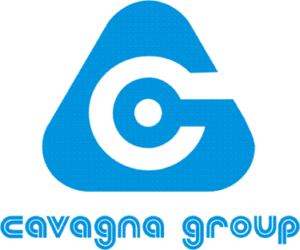
CAVAGNA GROUP
WE PRODUCE BATCHES UP TO 500 WITH A SUCCESSFUL SYSTEM!
“Before having the MULTICENTER I had to machine the part in different positioning with the following problems:
DENTS
CRITICAL THICKNESS
BURR PROBLEM
Thanks to the MULTICENTER we had the chance to optimize the cycle in order to solve the problems of quality and cycle time. In addition, the machine allows to tool from a part to another one in 15 minutes thanks to the great availability of tools in the magazine that are always present. Actually the tooling consists only in the jaws change.”
Giuliano Pintossi
Production dept. Manager
CAVAGNA GROUP SPA DIVISIONE OMECA
Via Statale 11 / 13
25010 CALCINATO (Ponte San Marco) BS – ITALY
www.cavagnagroup.com
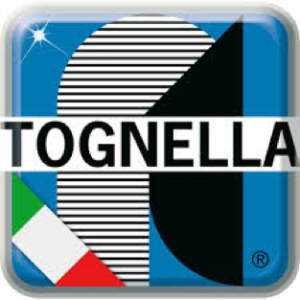
F.LLI TOGNELLA
Here is the phrase that sums up this customer’s objective:
“We produce – in our country – the products that we sell all over the world, and the owner’s direct involvement provides the best guarantee.”
For the past 50 years, Tognella S.p.A. has been marketing its products in different sectors, anywhere there are fluids to control and regulate. Specifically, Tognella S.p.A. produces valves for hydropneumatic oil regulations.
Before we installed the MULTICENTER, it was impossible for us to machine the six “sides” of my piece, with a few tilted drillings, at the same time.
Now, thanks to a suitably equipped MULTICENTER, I can machine the six “faces” and use standard tools.
The MULTICENTER has solved problems with the machining of some families of pieces with execution times that finally allow me to speak of “Productivity”.
Ferruccio Tognella
Owner – Technical Director
F.lli Tognella S.p.A.
via Goito, 60
21019 Somma Lombardo
Varese – Italy
www.tognella.it

KUEHR
“Our company is specialized in outsourced jobs, and our expertise can be summed up as being efficient in the production of small and medium lots of high-precision components made of Aluminum, Copper, Brass and Titanium. Prior to the MULTICENTER, we had high processing costs and long delivery times.
Ever since we installed the MULTICENTER, we have cut down on scrap, we are able to deliver much faster and we have reduced our production costs thanks to the quick re-tooling.
With the MULTICENTER, we have achieved positive results, improving the quality of our finished pieces and increasing productivity. Now, we can offer our customers faster deliveries at a more competitive price!”
Mr. Alexander Ostertag
Owner and Managing Director
Kühr GmbH
IZ-N.Ö.-Süd, Straße 3, Obj. 35
A-2351 Wiener Neudorf – Austria
www.kuehr.com
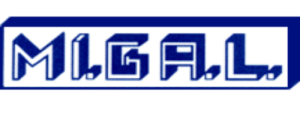
MI.GA.L
“The parts that we machine on the MULTICENTER are parts that are usually machined on horizontal centers.
On a center in order to compensate the tool changes and have a reasonable cycle time, I put more parts for each fixture and they created problems of repeatability since they are forged or cast parts.
Since the MULTICENTER has 3 machining centers, it is competitive speaking of the cycle time with one or two parts per fixture by simplifying the fixtures and in particular their cost.
The same thing is for tooling the machine before starting the production, the check of 16 or 24 parts per fixture extended the starting times, today with the MULTICENTER the max. parts that we load are two per pallet. In this way the tooling step is considerably sped up.
Another advantage is the possibility of load and unload with robot that with a machining center is not possible unless you invest more than 20/25 times the amount for the fixture building and as a consequence an important reduction of personnel.
The flexibility of managing the ramp up and rump down of a part, i.e. before a part is regularly machined on a transfer there are smaller batches and pre-series to do that on a transfer cannot be handled with low costs as with the MULTICENTER. The same is for the part that comes from a series, when it is usually at the end of life, you make batches to be used only as “spare parts” using the fixtures that you used on the transfer”
Fabio Ghidini
Production Manager
MI.GA.L. S.R.L.
Via Angelo Gitti, 18
25060 Marcheno (BS) – ITALY
www.migal.it
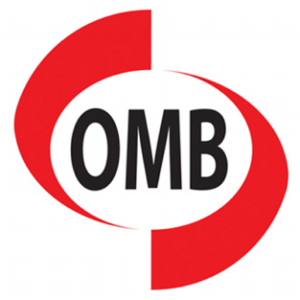
OMB SALERI
The MULTICENTER is fitting very well into the product environment of OMB and in particular it allows us to think and operate small batches using the dept. logic and not the single machine logic… Therefore, I do not have to stop big orders in order to make place for smaller requests anymore because now I can count on the MULTICENTER.
Alessandro Ronchi
Production & Lean Manager
OMB SALERI, SpA
Via Rose di Sotto 38/C
25126 BRESCIA – ITALY
www.omb-saleri.it
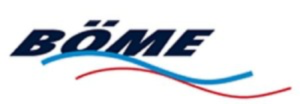
BOEME SRL
I made the right choice when I bought the MULTICENTER since (even if I do not have other machines similar to yours) I found the right compromise between “PRODUCTIVITY” and “FLEXIBILITY”.
We have different parts that are machined on your machine with batches which sometimes are small (500/1.000 parts) and sometimes are bigger (15.000/20.000). Before these parts were produced by single machining centers or by twinspindle lathe.
We found out that the tooling times of the MULTICENTER are similar to the previous machines but the productivity is immediately FIVE TIMES BETTER than the previous one (from annual statement). Before we had a twinspindle center and two centers dedicated to the production of those parts and often we made them produce outside. Now the MULTICENTER is enough and we still have a good safety margin.
We appreciate your fixture design and your project allowed to realize the part clamping in an extremely functional and performable way.
Do not hesitate to contact us if you have potential customers interested in purchasing the MULTICENTER.
Ing. Carlo Medina
Owner
Boeme S.r.l.
Via dello Strego, 1
28010 Cavallirio (NO) – ITALY
www.boeme.com
OK THE BOOK…
BUT, WHO IS MAURIZIO PORTA?
I have been a businessman for more than twenty years, working in the Machine Tools sector. My father founded the company Porta Solutions back in 1958.
Today, I manage the sales area, while my brother Giorgio deals with the production aspect of the company: together, we carry on our family’s tradition.
After my first experience working at the company for 7 years, I moved to the United States for 2 years, where I personally set up the American subsidiary, Porta North American Inc. in the town of Newington, Connecticut. This town is near the city of New Haven, where, in 1993, I attended college for one year.
The American experience was aimed at setting up a local facility in order to supply the systems produced by PORTA SOLUTIONS to customers operating in the automotive sector.
This was a real challenge as the U.S. market in this sector is the most competitive in the world.
Thanks to these systems, which were not easy to produce, PORTA SOLUTIONS was forced to quickly develop its expertise in order to compete with the German and Japanese giants already operating on American soil.
These efforts were nevertheless repaid by the customers themselves, and in just a few years PORTA SOLUTIONS became a supplier to companies such as TRW AUTOMOTIVE, HARLEY-DAVIDSON, DANA, THYSSENRUPP, RANGE ROVER and other important groups.
In 2005, after listening to customers and observing the market as it evolved, I became convinced of the need to launch a new product, different from the usual Machine Tools made to customer order. The name of this new product is MULTICENTER: a machine that is the first to be positioned between the special machine (TRANSFER) and the common MACHINING CENTERS.
At first, it was difficult to get this project started. The main cause for this was the cost of the machine itself, since it was not yet mass-produced and so its cost slowed the sales. On the other hand, the market still had to understand its usefulness, continuing to prefer the more productive TRANSFER machine.
ALL THAT GLITTERS IS NOT GOLD…
Anyhow, I never doubted the usefulness of this machine, and after three years, during the crisis of 2008, the MULTICENTER revealed itself to be the ideal machine for producing in a flexible manner, with fast production changes.
The key was no longer to target at the speed of execution of the part, but instead on the flexibility of the machine to adapt itself to new market needs, quickly and cost-effectively.
After winning over the users of special TRANSFER machines, the MULTICENTER began to steal market shares from sectors in which common MACHINING CENTERS were being used.
Today, PORTA SOLUTIONS’ turnover is made up of 70% of sales of machines of the MULTICENTER line, with the remaining 30% coming from sales of the TRANSFER line.
The hard work of the first years and the determination to never give up have fully repaid the commitment and dedication of all those who, at PORTA SOLUTIONS, have always believed in this project.
And now, it’s your turn!
Answer the 3 questions quickly, as in without thinking too much. They must be instinctive answers, there are no right or wrong answers, there is only your answer.
1) the first manufacturer that comes to mind for: Machining Centers
2) the first manufacturer that comes to mind for: Transfer Machines
3) the first manufacturer that comes to mind for: Flexible Machines
You simply have to write the 3 names in order
1)
2)
3)
Write your address below, SEND and you will receive the book “FLEXIBLE PRODUCTION” completely free.
Maurizio Porta
Expert in Flexible Production

 Ita
Ita Deu
Deu
